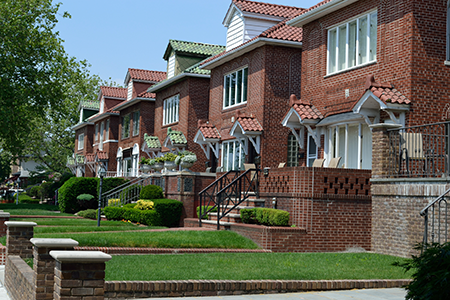

Any security solution will comprise of a combination of people, technology and processes, and must be suitable, sustainable and sufficient to cater for the prevailing risks based on available resources and budgets. These often present the proverbial irreconcilable trinity with unavoidable trade-offs being accepted. Providing a suitable solution starts with understanding what you have and how well your requirements are catered for.
A comprehensive audit should focus on security service providers. Their standard operating procedures (SOPs), service level agreements (SLAs) and how they are supported by available technologies, will give an indication of where you stand. Understand your environment and whom you are protecting.
Start at the beginning
The most basic needs start with entry control and perimeter management. Technology often supplements manpower and automated gates and entry systems that can be managed by residents via GSM based intercoms with pre-programmed users who directly permit entry to their visitors. Communication is critical and often simply knowing and engaging with neighbours supports a safer environment. CCTV and perimeter alarm systems can be configured to directly alert households and individuals using either mobile or hard-connected screens within households.
Integrated solutions allow for automated triggers between systems in response to events. Intelligent analytics can reduce false alarms and initiate predetermined responses. These may also be linked to cloud solutions, however, cost models must be clearly understood in regard to their recurring nature and intended usage. Remote monitoring services are also available and can act on your behalf.
Technologies ranging from infrared point beam detectors, which are able to cover long fence lines, to volumetric outdoor passives can supplement electric fence systems and CCTV cameras with intrusion analytics, and are becoming more economical. Retrofitting fibre infrastructure on an estate can be costly, but wireless technologies offer possible alternates. In new developments, integrated infrastructure or at least wire-ways must be provided around perimeters and within service roads in order to support future growth.
Integrating the people aspect
Your system should provide early reliable detection, acting as visible, audible and physical deterrents that delay any transgressors. Provide a clear mandate and parameters for response staff and empower their execution of responsibilities, considering how they are expected to respond directly to issues around residential units.
Engage with local police and community forums to stay updated of risks and trends in the area and engage with your security staff to adjust operating procedure to incorporate responses to threats.
Compliance is a critical factor that is often neglected and the Protection of Personal Information Act (POPIA) stipulates the rules relating to capture, storage and utilisation of information of persons whose details may need to be held for any reason. Contactors and tenants should be properly vetted and apprised of special requirements for them in order to reduce entry delays.
The need for management and control of visitors in more complex environments has supported the development of visitor management systems that range from pre-booking, code-based access, vehicle and registration scanning systems, to more complex integrated applications that facilitate integrated COVID screening, tracing and permission management. A policy must be implemented to ensure the processes and systems are aligned with POPIA.
Integrating various identification solutions
More complex access control systems can operate with proximity cards, RF tags, mobile device based credentials, fingerprint or even facial recognition access devices or a combination of these, each with varying levels of cost, security and administration considerations. Traditionally, more strict security protocols result in greater delays.
Beware of untested technologies and risks associated with ‘easy’ access solutions. Number plates can be cloned, facial recognition technologies may be unreliable in variable outdoor light and many cards can be easily copied. Run equipment trials within your environment if possible, especially before purchasing new or untested technologies that come at a premium, and especially when they are cheap. You definitely get what you pay for and you should avoid costly lessons and having to redo installations because of errors of judgement.
All equipment that requires power must be deployed with lightning surge protection and provision for backup operations, especially amid the unreliable supply of municipal power. Fibre and network infrastructure require uninterrupted operation. Photovoltaic solar panels, battery and inverter sets or generators and UPS systems can also be used to ensure continued supply. These systems should be continuously online in order to avoid interruptions in operation that may result in security breaches or unwanted damage to equipment.
In all these instances appropriate power and battery calculations along with suitable surplus safety factors should be considered. Charge cycles of different types of batteries many need long periods to recharge as compared with the operating cycles, so consecutive power failures may result in loss of your systems. Uptime of systems can be as important as security staff on the ground.
Many complex estates will incorporate multi-layered approaches with responders and technology deployed to cover risks from the perimeter inwards. Ultimately, security is everyone’s responsibility and systems should cater for inclusive participation of residents and security managers should facilitate compliance, and ensure the continuous review and maintenance of the operating procedures. These standard operating procedures should include measurable performance indicators for service providers and service level agreements should reflect performance expectations in line with the site security and safety plan.
For more information, contact ISF SFP,

© Technews Publishing (Pty) Ltd. | All Rights Reserved.